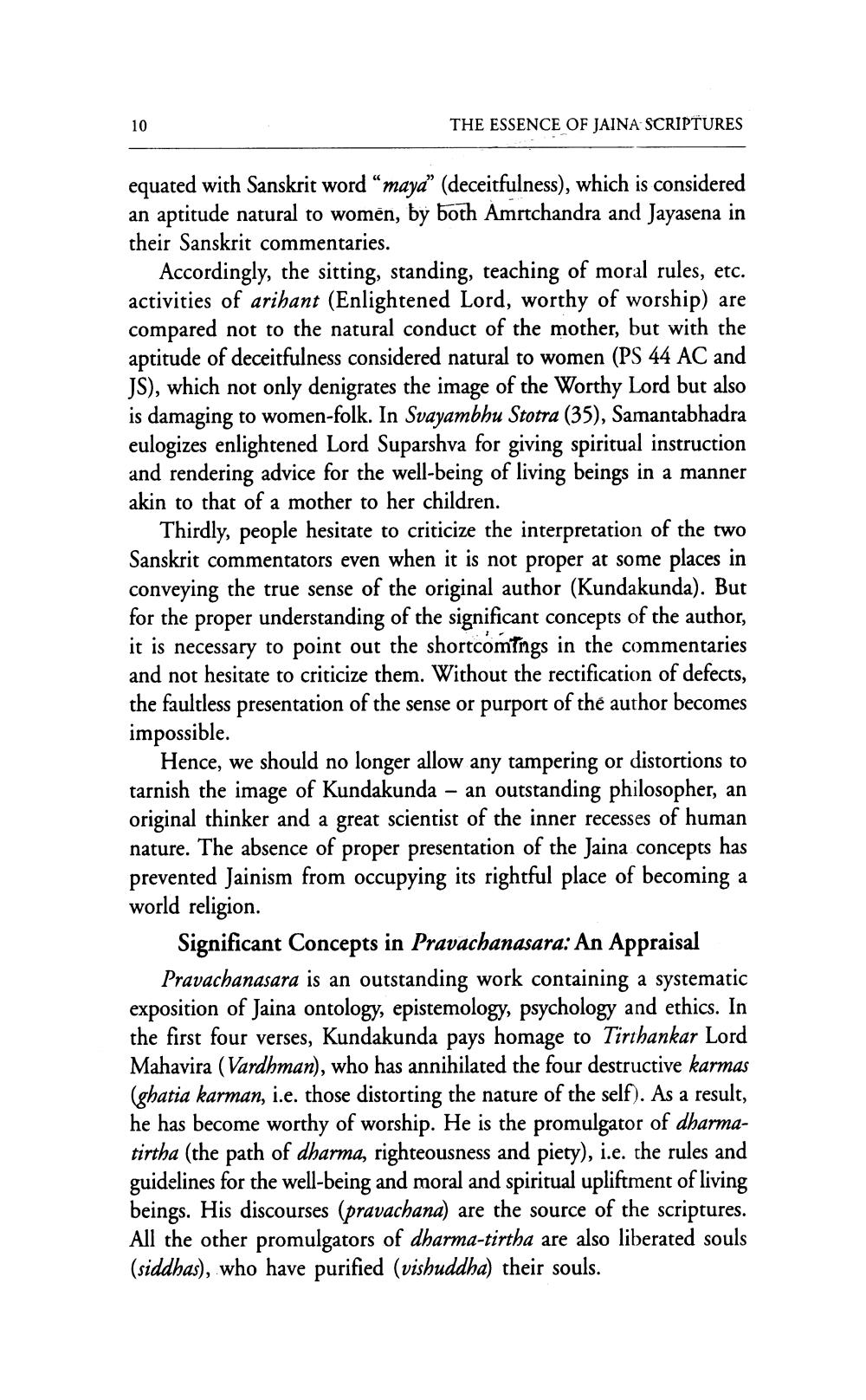________________
THE ESSENCE OF JAINA SCRIPTURES
equated with Sanskrit word “maya” (deceitfulness), which is considered an aptitude natural to women, by both Amrtchandra and Jayasena in their Sanskrit commentaries.
Accordingly, the sitting, standing, teaching of moral rules, etc. activities of arihant (Enlightened Lord, worthy of worship) are compared not to the natural conduct of the mother, but with the aptitude of deceitfulness considered natural to women (PS 44 AC and JS), which not only denigrates the image of the Worthy Lord but also is damaging to women-folk. In Svayambhu Stotra (35), Samantabhadra eulogizes enlightened Lord Suparshva for giving spiritual instruction and rendering advice for the well-being of living beings in a manner akin to that of a mother to her children.
Thirdly, people hesitate to criticize the interpretation of the two Sanskrit commentators even when it is not proper at some places in conveying the true sense of the original author (Kundakunda). But for the proper understanding of the significant concepts of the author, it is necessary to point out the shortcomings in the commentaries and not hesitate to criticize them. Without the rectification of defects, the faultless presentation of the sense or purport of the author becomes impossible.
Hence, we should no longer allow any tampering or distortions to tarnish the image of Kundakunda - an outstanding philosopher, an original thinker and a great scientist of the inner recesses of human nature. The absence of proper presentation of the Jaina concepts has prevented Jainism from occupying its rightful place of becoming a
world religion.
Significant Concepts in Pravachanasara: An Appraisal Pravachanasara is an outstanding work containing a systematic exposition of Jaina ontology, epistemology, psychology and ethics. In the first four verses, Kundakunda pays homage to Tirthankar Lord Mahavira (Vardhman), who has annihilated the four destructive karmas (ghatia karman, i.e. those distorting the nature of the self). As a result, he has become worthy of worship. He is the promulgator of dharmatirtha (the path of dharma, righteousness and piety), i.e. the rules and guidelines for the well-being and moral and spiritual upliftment of living beings. His discourses (pravachana) are the source of the scriptures. All the other promulgators of dharma-tirtha are also liberated souls (siddhas), who have purified (vishuddha) their souls.




